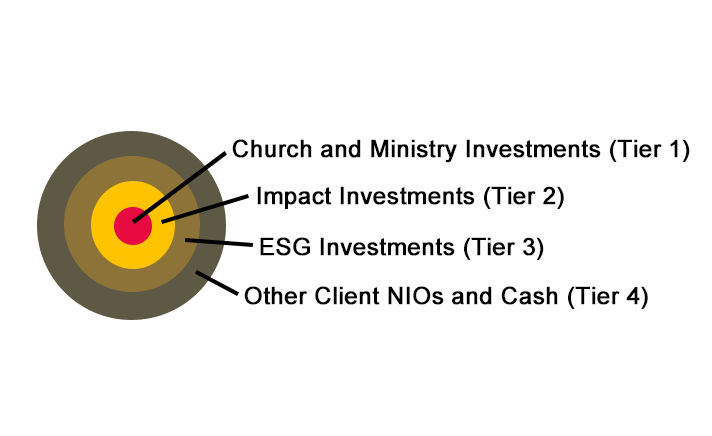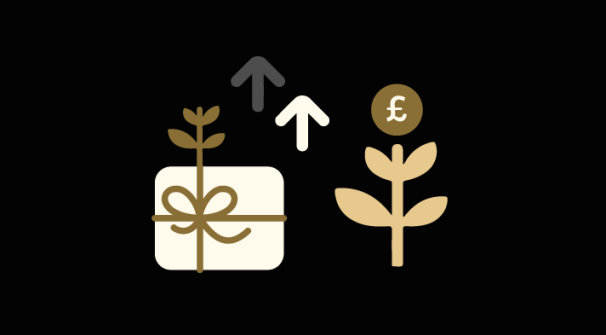As net-zero has moved stage centre in the public consciousness, socially aware investors and philanthropists are increasingly motivated to play their part.
However, the prospect is complex and overwhelming – can individuals move past ‘green-washing’ to make a meaningful difference, what does supporting net-zero initiatives within the Donor-Advised Fund (DAF) model look like, and what are the challenges involved?
The Advantages of the DAF Model
The ease and convenience of the DAF model has made it the fastest growing philanthropic-giving vehicle over the past few years. Like a charitable trust or foundation, a DAF is a powerful giving vehicle but much less costly and time-consuming to run; while the former can take several months to set up, and the process incurs substantial legal and other administrative fees, a DAF can be opened immediately and carries no start-up costs. Moreover, a DAF allows you to give anonymously, an option not afforded by the traditional model as its charitable status means it must keep public records. Another attractive feature of a DAF is the flexibility it permits; donations can be made in the form of shares, cash, investments, or property. In short, a DAF offers maximum flexibility, efficiency, and privacy, if desired, without limiting your giving impact.
Making a Meaningful Difference
The enormity of the net-zero challenges that we all face is overwhelming. We know that we, as individuals, do not have the power, resources, or legitimacy to make the urgent changes needed at scale to achieve net-zero. The extent of the task can demotivate us as donors: we perceive that what we can give will have minimal impact; we worry that our gifts will be squandered on inefficient bureaucracy; and we’re sensitive to the charge of ‘green-washing’, nervous that we will inadvertently be guilty of supporting an initiative whose green credentials are not all they seem.
Yet the net-zero goal remains one of the most pressing needs of our time and one in which we all have an opportunity to play our part as individuals, to optimise our resources to support and advocate for positive change. The DAF model empowers investors and philanthropists to do just that, with maximum flexibility and minimal hassle.
Supporting Net-Zero Using a DAF
Start by developing your net-zero strategy. Do your research and work out which areas you want to support.
Renewable energy companies are an obvious initial target when considering net-zero, but you may want to think more laterally; perhaps you want to support organisations working for positive environmental change, or you prefer to target initiatives that are educating and equipping younger generations to be effective environmental ambassadors for our planet.
Thinking more widely, you may wish to help tackle some of the social injustices created by environmental issues. For example, climate change is having a devastating impact on people in poverty as rising global temperatures create extreme weather events more frequently. In areas like sub-Saharan Africa, where the weather oscillates between extreme floods and extreme droughts, food production is hit adversely, and millions are put at risk of starvation. According to Tearfund, without radical action, climate change will push 132 million more people into poverty this decade.
If you’re looking to leverage the longer-term impact of your giving, then the DAF model also gives you the option to have your giving balance invested before it is granted out; if you choose to invest in opportunities that support Environmental, Social and Governance (ESG) criteria, and that may also seek to positively address the UN’s Sustainable Development Goals (SDGs), then you really start to create power with your giving, firstly by supporting ethical, environmentally-friendly investments, and then secondly by making grants in line with your net-zero strategy.
Challenges Involved
As investors and philanthropists consider their net-zero options, navigating a way forwards can be tricky: how can you identify high calibre organisations that meet your criteria? Once you identify them, how can you be sure that they are upholding the ESG principles they purport to follow? If there are complex supply chains involved, how can you assess ethical risks that might be buried two or three layers down?
When reviewing your investment and giving portfolios with these questions in mind, how can you ensure that you don’t inadvertently neutralise or cancel the positive impact in one area by also supporting companies that are not engaged with net-zero and/or are not ESG-compliant?! An obvious example would be to ‘cancel’ the positive impact of a grant to an environmental care organisation with an investment elsewhere in your portfolio in a non-renewable energy like coal.
You can mitigate the risk by conducting an ‘impact’ audit on your wider investment strategy. Here at Stewardship, we have adopted the Bull’s Eye framework developed by Access, the Foundation for Social investment. It asks the primary question – what is the positive impact that our investments seek to generate? Tiers are then created in relation to the decided impact, with the most important goal at the centre, which is what we call ‘Kingdom Impact’, that is investments in organisations devoted to supporting and building Christian ministry and resourcing the Church.
We also support ‘Broader Impact Investments’ that support the UN’s SDGs as these are compatible with our Christian ethos of being the best stewards we can be with the planet’s resources. Once you have established your ESG investment goals, the longer-term aim is then to move as many of your investments into the inner two rings of the Bull’s Eye as possible.
In conclusion, while navigating the net-zero challenge is daunting, three steps will empower you to create meaningful impact in this area: firstly, take the time and advice you need to determine a ‘green’ strategy for your investments and grants that will allow you to create impact in the areas that matter to you most; then ensure you audit your existing portfolio in line with that strategy and put in place an action plan for progress; and finally, take advantage of the flexibility and efficiency of the DAF model to deliver on your net-zero goals.
This article was written by our Chief Philanthropy Officer, Nicola Johnson, and was first published in the summer edition of the Philanthropy Impact Magazine (page 29).
Find out more
Schedule a call with our team to discuss how our Donor Advised Fund account can help you support net-zero initiatives.










